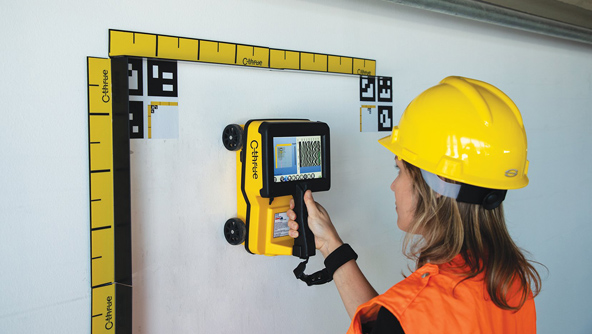Regional RainierGPR Service Areas for Accuracy Concrete Scanning
Regional RainierGPR Service Areas for Accuracy Concrete Scanning
Blog Article
Concrete Scanning: A Critical Action Towards Ensuring Architectural Stability and Security
In the realm of construction and framework maintenance, the relevance of concrete scanning can not be overstated. This meticulous process holds the essential to revealing possible risks hidden below the surface of apparently solid frameworks. By employing sophisticated innovation and approaches, concrete scanning offers as a pivotal device in making sure that the integrity and security of buildings and bridges are supported to the greatest requirements. Nevertheless, past its surface-level implications, the duty of concrete scanning prolongs far deeper than meets the eye.
Significance of Concrete Scanning
Concrete scanning plays an essential function in ensuring the architectural integrity and security of buildings and infrastructure projects. By making use of advanced technologies such as ground-penetrating radar (GPR) and electromagnetic induction, specialists can non-destructively check concrete structures to identify potential problems, spaces, ingrained objects, and reinforcement format. This procedure enables early detection of anomalies that can endanger the stability of a framework, avoiding pricey damages and making sure the security of passengers.
Prior to boring, cutting, or coring right into concrete, scanning assists recognize the accurate places of rebar, post-tension cables, and other ingrained elements, decreasing the danger of unintentional hits that can lead to structural weak points. Furthermore, concrete scanning aids in quality control by verifying the thickness of concrete covers and identifying any inconsistencies that might influence the general sturdiness of the framework.
Modern Technology for Concrete Assessment

Advantages of Very Early Detection
Prompt discovery of architectural problems can dramatically mitigate threats and guarantee the durability of construction projects. By identifying potential problems beforehand in the building procedure, stakeholders can take aggressive steps to address issues prior to they escalate into bigger and much more costly problems. One of the essential advantages of early discovery is the avoidance of structural failings, which can pose severe security hazards and bring about project hold-ups and financial losses.
Additionally, very early detection enables prompt repairs and upkeep, which can help extend the lifespan of the framework. By dealing with concerns immediately, construction groups can prevent costly fixings or even the requirement for premature replacement of structural elements. This proactive method not only saves money and time but also improves the total safety and toughness of the building and construction project.
In addition, very early discovery can boost job planning and decision-making by giving stakeholders with valuable understandings right into the problem of the framework. Armed with this details, task managers can make educated options concerning construction products, timelines, and approaches, leading to more effective and efficient project outcomes.
Ensuring Structural Stability
Making certain the structural security of a building job is vital to its security and durability. Structural stability refers to the capability of a building or facilities to maintain its type and function under environmental conditions and numerous loads. To attain this, comprehensive evaluation and monitoring of the structure are necessary. Concrete scanning plays an important role in ensuring structural stability by finding prospective issues such as spaces, delamination, or support deterioration that might jeopardize the honesty of the structure gradually.
By using advanced scanning technologies like ground-penetrating radar (GPR) and electromagnetic induction, construction experts can non-invasively examine concrete structures to identify areas of worry beneath the surface area. This aggressive technique permits the very early detection of flaws or weak points, enabling punctual repairs or reinforcement to protect against structural failings.
Regular concrete scanning during different building phases and throughout the life cycle of a structure can help keep its stability, minimize risks, and ensure the security of residents. By focusing on structural security with concrete scanning, construction projects can improve their durability and sturdiness, eventually adding to higher security and durability.

Protecting Against Important Failings
To protect against devastating occasions, meticulous tracking and proactive maintenance are vital in avoiding crucial failings within architectural structures. Spotting prospective issues prior to they intensify is vital to stop architectural failings. Carrying out routine assessments, such moved here as concrete scanning, can disclose hidden flaws like gaps, cracks, or corrosion that might jeopardize the stability of a framework. By utilizing sophisticated scanning innovations like Ground Permeating Radar (GPR) or Concrete X-ray, designers can non-destructively assess the problem of concrete and determine weak factors that need support or fixing - RainierGPR Service Areas.

Verdict
Finally, concrete scanning plays a critical function in making sure structural integrity and safety by making use of advanced technology for very early detection of potential issues. This proactive approach assists prevent crucial failings and guarantees the security of frameworks. It is important to prioritize concrete examination as a common technique to protect the long life and safety of buildings and framework.
Concrete scanning plays an important role in guaranteeing the structural stability and security of buildings and facilities jobs. In addition, concrete scanning aids in high quality control by validating the thickness of concrete covers and discovering any type of discrepancies that may influence the general toughness of the framework. Concrete scanning plays an important role in making sure architectural stability by identifying possible concerns such as voids, delamination, or reinforcement corrosion that can endanger the integrity of the framework over time.

In conclusion, concrete scanning plays an essential function in guaranteeing architectural honesty and safety and security their website by using advanced innovation for very early detection of prospective concerns.
Report this page